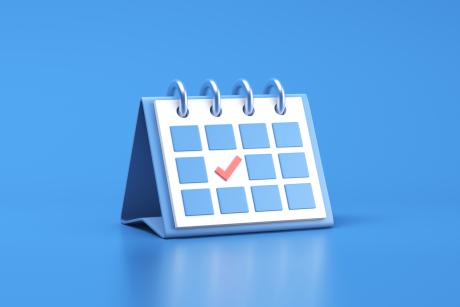New Accessibility Rules for Government Websites
While accessibility has been a goal for many organizations for years, a new rule from the Department of Justice has made it a requirement.
Based on the same principals of the Americans with Disabilities Act (ADA), the federal government will now require all state and local government websites to be fully accessible.

Similar to previous rulings of the ADA, which led to more accessible buildings, all state and local government web content and mobile apps must also be made accessible to the public. But how is accessibility measured online?
The Justice Department decided to rely on a widely accepted standard for accessibility known as WCAG, or the Web Content Accessibility Guidelines–specifically WCAG 2.1, Level AA.
This documented set of rules and recommendations has been used for years now as a measure for accessibility compliance. It includes topics such as setting proper color contrast, requiring text to accompany images, keeping text legible and much more.
Most automated tools for measuring accessibility also rely on WCAG standards, such as the free WAVE or aXe plugins, or Google Lighthouse. Paid site monitoring tools such as SiteImprove or DubBot also use WCAG standards. If you've not do so before, try running your site through one of these tools and you can discover some areas of improvement for your own organization!
The "2.1" in the new rule simply refers to a version of WCAG (most recent is 2.2), while "Level AA" refers to the strictness of how the rule is applied. Level AAA is the most restrictive, while Level A is the least.

The new rule specifically highlights "state and local government," meaning it includes various state departments and agencies, as well as city and county organizations.
But it is a bit more expansive than that! The rule covers any public content provided by these organizations, wherever it appears, and seems to include organizations funded by government as well. Additional groups include public libraries, public colleges and universities, parks and recreation, public hospitals, courts, law enforcement agencies and many more.
When it doubt, consult your own legal team and do your own research.

While the rule applies to a wide range of organizations, there are reasonable exceptions.
Older information simply provided for archival purposes, for example, may be exempt. Another example are documents posted online prior to the date of compliance (e.g. PDFs).
Many organizations rely on PDFs for sharing information, but government sites are definitely one of the top. PDFs can be made accessible, but chances are many existing documents were not designed with that mind (especially if they are more than a few years old).
A more detailed accounting of what's exempt and what is not can be found on the ADA website.

The rule was published on April 24, 2024. All state and local governments (and related organizations) have 2 to 3 years to make sure their web content and online applications are meeting the accessibility standards of WCAG 2.1.
The specific amount of time depends on the population size they are serving. For example, a government agency serving a region of more than 50,000 people has 2 years (April 24, 2026), while those serving a smaller populated region have until April 2027.
We know websites, but we aren't lawyers, so you should always take the time to read up on this new ruling yourself.
The government website at ada.gov has a very nicely presented article on this topic, and we highy recommend a read: https://www.ada.gov/resources/2024-03-08-web-rule/
If you are looking for professional help to make your website more accessible (and keep it that way), please contact us for more information!





Join the Discussion +